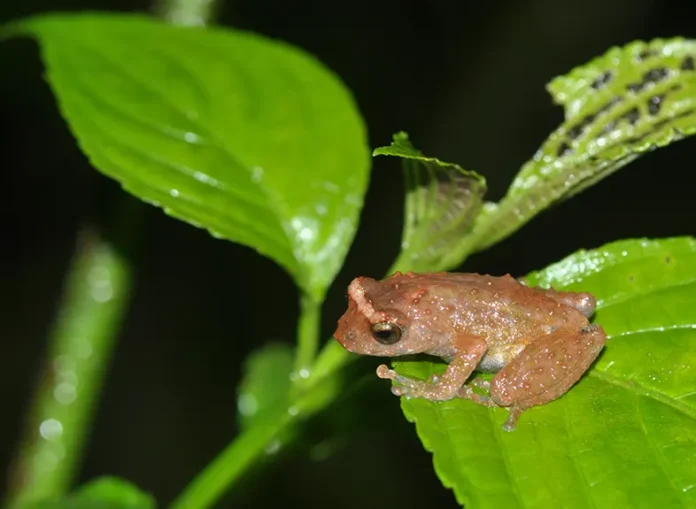ITANAGAR, 21 Nov: In a major taxonomic revision, the Wildlife Institute of India, Dehradun, announced the discovery of 13 new species of amphibians from Northeast India.
This is the highest number of vertebrate species described in a single publication in over a decade in India. Before this study, 82 species of bush frogs were known from India, of which 15 are found in Northeast India.
Out of 13 new species, six were discovered from Arunachal Pradesh, three from Meghalaya and one species each from Assam, Mizoram, Nagaland and Manipur. Out of the 13 species, seven were discovered in the protected areas of Arunachal, Assam, and Meghalaya, and one was from a community-protected forest in Khonoma, Nagaland.
In Arunachal, two new species were registered from the Namdapha Tiger Reserve, and one each from Eaglenest Wildlife Sanctuary and Mehao Wildlife Sanctuary. The three species from Meghalaya were named Narphu bush frog, discovered from Narphu Wildlife Sanctuary, Mawsynram bush frog from Mawsynram, and Boulenger bush frog, named after GA Boulenger, an authority on amphibians during the British era.
In Assam, the Barak valley bush frog was discovered in the Barail Wildlife Sanctuary.
Such a series of discoveries of higher vertebrates from the protected areas shows poorly explored biodiversity status, even in the protected areas such as tiger reserves.
Considered a major stride towards recognising the hidden biodiversity of the region, the study integrates acoustics, genetics and morphology. The study also revisits the status of century-old museum collections from the Indo-Burma region.
Based on a large sampling approach covering 81 localities in eight states, including 25 protected areas, the study also revises the distribution of known species and synonymises four previously described species.
The colossal manuscript, comprising more than 100 pages, not only helps solve taxonomic conundrumssurrounding the tiny tik tik watch frogs of Northeast India but also overcomes three conservation shortfalls, such as linnean shortfall (naming species before they are lost), Wallacean shortfall (knowing distribution), and Darwinian shortfall (providing evolutionary relationship).






